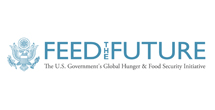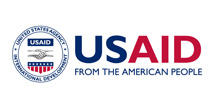July 7, 2016 /
AKLDP
/
Resources
Commodity-based Trade in Livestock Products: New Opportunities for Livestock Trade in the COMESA Region COMESA/CAADP Policy Brief No. 1 May 2008 COMESA CAADP Policy Brief 1 Livestock Commodities Hidden Value on the Hoof: Cross-border Livestock Trade in Eastern Africa COMESA/CAADP Policy Brief No. 2 February 2009 COMESA CAADP Policy Brief 2 Cross Border Livestock Trade Income Diversification Among…
Read More
July 7, 2016 /
AKLDP
/
Resources
Policy Framework for Food Security in Pastoralist Areas (draft). Common Market for Eastern and Southern Africa (COMESA)/Comprehensive Africa Agriculture Development Programme (CAADP) PFFSPA Consultative Draft Dec 09 final Policy Briefs on Livestock Trade and Pastoralism from the Common Market for Eastern and Southern Africa (COMESA)/Comprehensive Africa Agriculture Development Programme (CAADP) Regional Livestock Trade studies and briefings – under construction…
Read More
July 7, 2016 /
AKLDP
/
Resources
Early Response to Drought in Pastoralist Areas: Lessons from the USAID Crisis Modifier in East Africa, 2015, by Andy Catley and Rod Charters pa00m1px-2 Resilience and Risk in Pastoralist Areas: Recent Trends in Diversified and Alternative Livelihoods, 2016, by Peter Little, Dawit Abebe, Kristin Bushby, Peter Little, Hussein Mahmoud and Elizabeth Stites. TUFTS_1610_Risk_Pastoralist_V3_online[1]-2 Protecting Milk Supply to…
Read More
July 7, 2016 /
AKLDP
/
Resources
Rapid Review of the Cash‐for‐Work and Natural Resource Management Components of the RAIN Project, 2010 Tufts-Rapid-Review-of-RAIN-Project Impact Assessment of Small‐Scale Pump Irrigation in the Somali Region of Ethiopia, 2010 CHF impact assessment Somali Region Impact Assessment of the ACDI/VOCA Livestock Markets in Pastoralist Areas of Ethiopia, 2010 VOCA impact assessment Impact Assessments of Livelihoods-based Drought Interventions in Moyale…
Read More
July 7, 2016 /
AKLDP
/
Resources
Guidelines for Livelihoods-based Livestock Relief Interventions in Pastoralist Areas. 2006. PLI Tufts first guidelines National Guidelines for Livestock Relief Interventions in Pastoralist Areas of Ethiopia. Ministry of Agriculture and Rural Development, 2008. GoE National Guidelines
Read More
June 30, 2016 /
AKLDP
/
Resources
Income Generating Groups in Pastoralist Areas and Scaling-up. Pastoralist Livelihoods Initiative Ethiopia, Policy Brief, October 2009. PLI Policy Brief Scaling-up Income G Groups More Food for Thought: Benefits and Costs of Supplementary Cattle Feeding During Drought. Pastoralist Livelihoods Initiative Ethiopia, Policy Brief, August 2008. PLI Policy Brief More Food for Thought Nov 08 Food for Thought: Supplementary…
Read More
August 25, 2015 /
AKLDP
/
Latest news, Resources
The Agribusiness Marketing and Development Project (AMDe) is Feed the Future’s main project in Ethiopia for support agriculture value chain development. The external mid-term evaluation of the project is now complete and the report can be downloaded here AGP-AMDe_MTE final.
Read More
August 5, 2015 /
AKLDP
/
Resources
The US Government’s Feed the Future program in Ethiopia aims to support inclusive agriculture sector growth and improve nutrition, and funds projects valued at $273 million. This mid-term evaluation of the program focuses on the five main Feed the Future projects, which in terms of funding, comprise approximately 78% of the overall program. The evaluation report assesses performance…
Read More
June 2, 2015 /
AKLDP
/
Latest news, Resources
The report of the external mid-term evaluation of the Agricultural Growth Program – Livestock Market Development (AGP-LMD) Project in Ethiopia is now available. The AGP-LMD is part of the USAID Feed the Future program with the objective of fostering growth and reducing poverty by improving the productivity and competitiveness of selected livestock value chains: dairy,…
Read More
May 13, 2015 /
AKLDP
/
Resources
Drought Cycle Management evolved in northwest Kenya in the mid-1980s and has been a robust and well-used approach for over 20 years. This AKLDP Technical Brief reviews the model and explains how it relates directly to recent thinking on drylands resilience. The current momentum around resilience is seen as an important opportunity to further institutionalize Drought Cycle Management…
Read More


